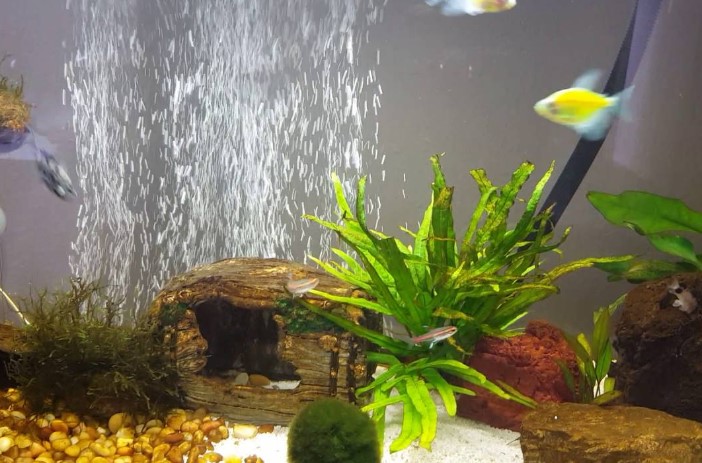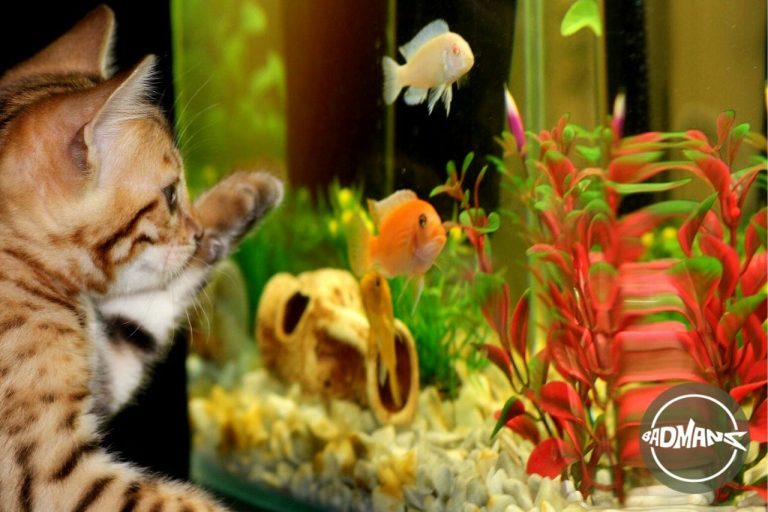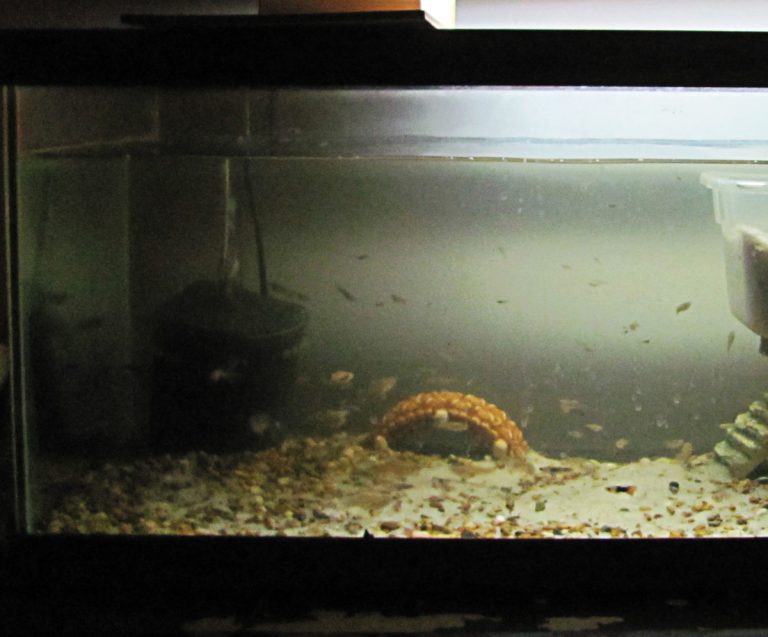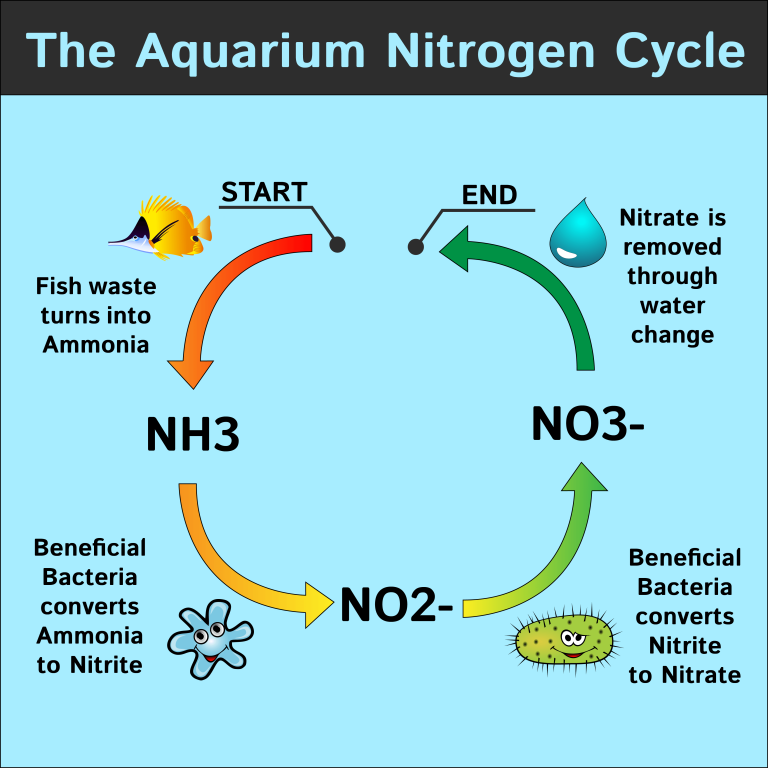Optimal Oxygen Levels for a Healthy Fish Tank: Facts and Tips
Ideal oxygen levels in a fish tank should be around 5 to 6 parts per million (ppm). Adequate oxygen levels are necessary for the well-being of your fish and other aquatic creatures.
Without sufficient oxygen, fish will begin to exhibit gasping behavior, swim lethargically or even die. Maintaining the proper oxygen levels in your fish tank is of the utmost importance. Fish require adequate oxygen to breathe, and without it, they can become stressed, which can lead to disease and death.
Aside from a lack of oxygen, other factors can also impact the amount of oxygen in your tank, such as overcrowding and overfeeding. In this article, we’ll explore the various ways to ensure adequate oxygen levels for your aquatic pets. By following these tips, you can create a healthy and thriving environment for your fish.

Credit: pethelpful.com
Importance Of Oxygen Levels In A Fish Tank
Oxygen’S Role In Keeping Fish Healthy
Oxygen is a vital component of a healthy fish tank. Here’s why.
- Fish rely on oxygen to breathe, just like humans. Without sufficient oxygen, they will not survive.
- Oxygen also aids in the breakdown of waste produced by fish. Without enough oxygen, the waste can build up and lead to poor water quality and diseases like ammonia poisoning.
- Plants in the tank also use oxygen, but they produce oxygen during the day. However, at night, they consume oxygen, which can lower oxygen levels in the tank.
- The ideal oxygen saturation level for a fish tank is between 5-8 milligrams per liter (mg/l). Maintaining this level will help keep your fish healthy and happy.
Impacts Of Low Oxygen Levels In A Fish Tank
Low oxygen levels in a fish tank can be detrimental to the health of your fish. Here are some key impacts to consider.
- Fish will become stressed and begin to exhibit abnormal behavior, such as gasping for air at the surface or resting on the bottom of the tank.
- Poor water quality can lead to diseases like fin and tail rot, which are more likely to occur when oxygen levels are low.
- A lack of oxygen will slow down the metabolism of fish, leading to decreased growth, decreased appetite, and decreased overall health.
- Low oxygen levels can lead to an overly acidic environment, which can be toxic to fish and other aquatic life.
Signs Of Poor Oxygen Levels In A Fish Tank
It’s important to be able to recognize the signs of poor oxygen levels in your fish tank. Here are some common ones to look out for.
- Fish gasping for air at the surface of the water.
- Fish swimming slowly or appearing lethargic.
- Fish congregating near the water’s surface.
- An increase in algae growth.
- Foul odors emanating from the tank.
- Poor water clarity.
Maintaining proper oxygen levels in your fish tank is crucial for the health and well-being of your fish. Regular testing is necessary to ensure the levels are optimal, and adding an air pump can help increase oxygen saturation. By taking the necessary precautions, you can give your fish the best chance at a long and healthy life.
Measuring Oxygen Levels In A Fish Tank
Understanding Dissolved Oxygen (Do)
Fish need oxygen to survive, just like humans. In fish tanks, oxygen is added through aeration or by using a filter. However, it is important to know the amount of oxygen in the water to ensure the fish are getting the right amount.
This is where dissolved oxygen (do) comes into play.
Do measures the amount of oxygen present in the water, which is essential for the fish to breathe. Do is expressed in parts per million (ppm), and the ideal do level for a fish tank is between 5 to 7 ppm.
To keep your fish healthy, measuring the do levels in your aquarium is a crucial step.
Importance Of Measuring Do Levels
Monitoring do levels on a regular basis is necessary to keep your fish healthy. High levels of do can be the cause of various diseases in fish, including gas bubble disease and the death of plants, while low do levels can cause fish to suffocate, become stressed, and eventually die.
Sudden changes in do levels can occur due to a variety of reasons, such as overstocking the aquarium, overfeeding the fish, a clogged filter, or changing too much water at once.
By measuring do levels and maintaining the optimal range, you can keep your fish healthy and avoid any health issues that could arise from a lack of oxygen.
Tools For Measuring Oxygen Levels In A Fish Tank
Measuring the do levels in a fish tank is a simple process. Some tools that can be used to measure the do levels include:
- Digital oxygen meter: This tool provides an electronic reading of the do levels. It requires a specialized oxygen probe and is the most accurate tool for taking readings.
- Oxygen test kits: These kits are available in most pet stores, and they use a color-matching process to determine the do levels in the water. They are more affordable than digital meters but can be less accurate.
- Aquarium oxygen monitors: These monitors continuously display the do levels in the aquarium, making it easy to monitor the levels in real-time. They are more expensive than test kits but provide a sense of security that the do levels are continuously being monitored.
Measuring the do levels in a fish tank is a crucial step in keeping your fish happy and healthy. Using any of the above tools can help you keep track of the do levels and take action to ensure your fish receive the right amount of oxygen.
Factors Affecting Oxygen Levels In A Fish Tank
To maintain a healthy environment for your fish, it’s essential to pay attention to the oxygen levels in your fish tank. A lack of oxygen can create several problems, including fish deaths. Here are the factors that affect oxygen levels in a fish tank:
Water Temperature
Water temperature affects oxygen levels in a fish tank. Warmer water contains less oxygen, so if your fish tank is too warm, there may be an insufficient amount of oxygen for your fish. Cooler water temperatures are better for oxygen levels, so try to keep your fish tank below 80°f.
Tank Size And Shape
The size and shape of your fish tank can impact oxygen levels. The smaller the tank, the less oxygen it can hold. If you have a small tank, make sure you’re not overcrowding it with fish. The shape of the tank can also determine how well oxygen is distributed throughout the tank.
Number And Size Of Fish
The number and size of fish in your tank can affect oxygen levels. More fish means more oxygen use, so a larger tank is necessary. Additionally, larger fish consume more oxygen than smaller fish. The general rule is to have one inch of fish per gallon of water.
Filtration System
A good filtration system is crucial for maintaining oxygen levels in your fish tank. The filter helps maintain a healthy environment by removing waste and debris that can lower oxygen levels.
Plant Life
Plant life plays a vital role in maintaining oxygen levels in a fish tank. Plants produce oxygen during photosynthesis, which helps to increase the oxygen levels in the tank. Make sure to include live plants in your tank, as they are more effective than plastic plants.
Overall, by considering these factors and maintaining proper oxygen levels, you’ll create a healthy and thriving environment for your fish.
Maintaining Optimal Oxygen Levels In A Fish Tank
Fish owners need to ensure that their pets are living in a healthy environment. One factor that can make a difference in a fish’s aquatic life is the amount of oxygen in their tank. Oxygen is a vital part of a fish’s survival, as it affects their metabolism and energy levels.
Therefore, it’s essential to maintain optimal oxygen levels in a fish tank to keep our aquatic friends healthy and happy.
Providing Adequate Surface Agitation
Surface agitation is the process that breaks the surface tension of a fish tank, which increases the exchange of gases between air and water. Waterfall-style filters, in-tank filters, and air stones are among the items that provide enough surface agitation.
Here are some benefits of this process:
- Increases oxygen levels in the water
- Aids in removing carbon dioxide and other gases from the tank
- Enhances the circulation of the water, which helps to maintain stable water temperatures
Adjusting Water Circulation
Water circulation creates a healthy environment for your fish by allowing current to flow equally throughout the tank. It helps to distribute heat, oxygen, and nutrients. Adjusting the water circulation in your aquarium can be perfect for getting the right oxygen levels.
Here are some ways you can adjust water circulation:
- Understand your fish’s preferred water current and tailor your water circulation strategies to their liking.
- Position the outflow nozzle of the filter in the direction that produces the current your fish prefer.
- Use a water circulation pump to create the required water current if your filter can’t produce it.
Adding Aeration Devices
One of the most popular ways of maintaining an ideal oxygen level in your aquarium is by using aeration devices. These tools are essentially pumps that suck in air and push it through an air stone, diffusing air bubbles throughout your tank.
Here are some benefits of adding aeration devices:
- Increases the availability of oxygen in the water
- Aids in removing carbon dioxide and other toxic gases
- Generates a gentle water current, which helps to spread oxygen evenly across the aquarium
- Promotes beneficial gas exchange in the water
Limiting Overcrowding
Overcrowded fish tanks often exhibit low oxygen levels. It is because, when too many fish are living in a small tank, they deplete oxygen levels faster than it can be replenished. Therefore, fish owners need to limit the number of fish they have in a tank to maintain optimal oxygen levels.
Here are some steps that can be taken:
- Make sure to follow the recommended number of fish and the tank’s size to prevent overcrowding.
- Keep in mind that different fish species will require different sizes of a tank, depending on their adult size and behavior.
- If more fish are added, consider increasing the tank’s size or reducing the number of existing fish.
Performing Regular Water Changes
Regular water changes can significantly contribute to maintaining ideal oxygen levels in a fish tank. Aquarium owners should regulate their water parameters and perform necessary water changes according to the tank’s needs. Here are the benefits of regularly changing aquarium water:
- Helps to remove excess waste produced by fish
- Restores proper oxygen levels
- Increases the health and vitality of fish
- Stabilizes water ph level
Maintaining optimal oxygen levels is vital to your fish’s well-being. By following the tips listed above, fish owners can provide their pets with a healthy environment. With proper care, fish can live a long and happy life.
Frequently Asked Questions For How Much Oxygen Should Be In Fish Tank
What Happens If There Is Not Enough Oxygen In A Fish Tank?
The fish can suffocate and die due to lack of oxygen in the water.
How Often Should The Water In A Fish Tank Be Changed?
Water should be changed every week or biweekly depending on the size of the tank.
Can Too Much Oxygen Harm Fish In A Tank?
No, fish are able to regulate the amount of oxygen they need and excess oxygen will simply escape from the tank.
What Are Signs That A Fish Tank Doesn’T Have Enough Oxygen?
Signs of low oxygen include fish at the water surface gasping for air, slow swimming, and lack of appetite.
Conclusion
It’s crucial to maintain an appropriate level of oxygen in your fish tank to keep your aquatic pets healthy and happy. Apart from the size, shape, and type of fish tank, factors such as the number of fish, the temperature, and the size of the fish, all play significant roles in determining the oxygen level required.
Regular checkups and maintenance of all equipment involved in the oxygenation process are critical to ensure that all components are in good condition and working correctly. Remember to maintain the required oxygen level even when you are away by using timers or installing automatic systems.
By doing so, you are setting up a healthy and thriving environment for your lovely pets and preventing any possible health hazards. It’s always essential to put your pets’ health first and foremost when dealing with aquatic life. Ensure you keep these tips in mind when considering the appropriate oxygen levels for your fish tank.






